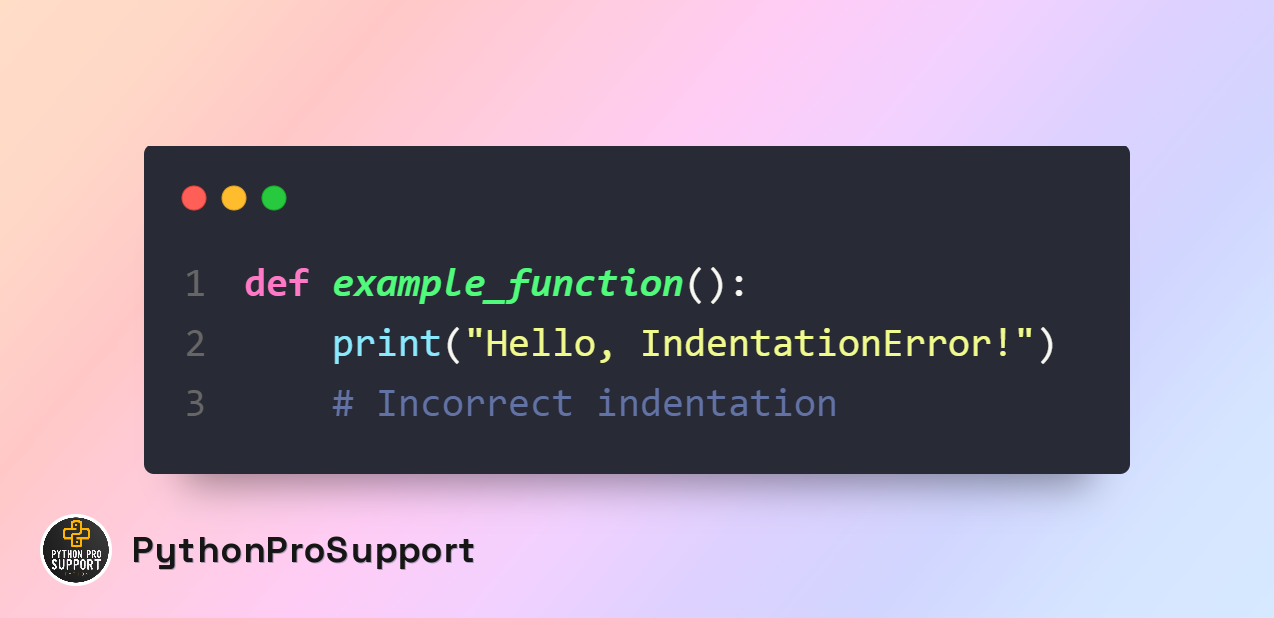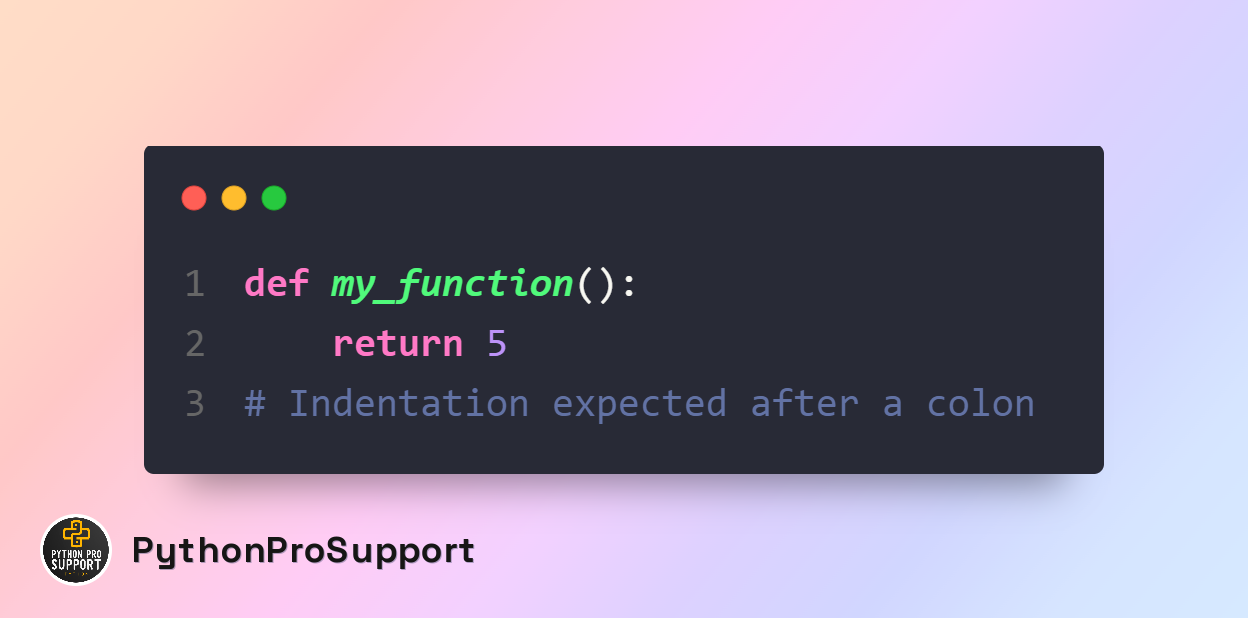Outlines
Addressing IndentationError in Python: Python’s Whitespace Woes
Addressing an IndentationError in Python involves navigating the language’s strict adherence to whitespace. Indentation errors occur when spaces or tabs are improperly used inside the code, violating Python’s indentation rules. This error normally arises when indentation degrees within the equal block of code are inconsistent or mismatched. Python relies on indentation to define blocks, together with loops, features, or conditional statements, in contrast to other languages that use curly braces or key phrases.
To solve this difficulty, meticulously have a look at the indentation at some point in the code, making sure uniformity and adherence to Python’s encouraged general of 4 areas are consistent with the indentation degree. Debugging equipment and code editors highlighting whitespace inconsistencies useful resource in detecting and rectifying IndentationErrors, ensuring easy and efficaciously based code, thereby allowing Python’s fashionable and readable syntax to feature without encountering such whitespace woes.
What is IndentationError in Python?
IndentationError in Python occurs when there’s incorrect or inconsistent indentation within the code, violating Python’s syntax rules. It signifies a deviation from the required whitespace structure, commonly encountered in defining code blocks like loops, functions, or conditionals where indentation levels aren’t aligned correctly.
Example:
This example shows the basic function with showing the message ‘Hello, IndentationError!’. After this example, there are different cases I shared with you to understand concepts.

Explanation:
In Python, indentation is critical to indicate code blocks. In this case, the print assertion within the example_function() lacks the necessary indentation. Python expects the contents of the characteristic to be indented to define its scope. The absence of right indentation, in this situation, will bring about an IndentationError, indicating a contravention of Python’s syntax regulations concerning indentation. To remedy this mistake, make certain that every line inside the characteristic has a consistent indentation, normally the usage of four areas per indentation degree.
Python IndentationError Types with Examples
Each of those examples showcases a different state of affairs that can cause an IndentationError in Python. These mistakes typically stand up due to deviations from Python’s specific indentation regulations, and correcting them entails making sure steady and appropriate indentation all through the code.
In Python, IndentationError can arise because of diverse problems related to wrong or inconsistent indentation. Here are special sorts of IndentationError with examples:
1. Missing Indentation:
|
1 2 |
def my_function(): print("Indented correctly.") # Missing indentation |
2. Inconsistent Indentation:
|
1 2 3 |
def my_function(): print("Proper indentation.") print("Inconsistent indentation.") # Inconsistent spaces/tabs |
3. Mixing Spaces and Tabs:
|
1 2 3 |
def my_function(): print("Using spaces") print("Using tabs") # Mixing spaces and tabs |
4. Incorrect Indentation in Control Structures:
|
1 2 |
if True: print("Indented inside if.") # Incorrect indentation for 'if' block |
5. Indentation after a Colon is Expected:

The above example will help you get the concept of an indentation that can be set after a colon in a function.
Best Practices to Avoid IndentationError
these are different practices, builders can decrease the prevalence of IndentationError, ensuring code readability and adherence to Python’s indentation requirements.
To avoid IndentationError in Python, adhere to these quality practices:
1. Consistent Indentation Style: Maintain a uniform indentation style at some point in the codebase. I have mentioned here, Python’s endorsed popularity and the use of four areas for each indentation degree.
2. Use Whitespace-sensitive Editors: Utilize code editors or IDEs that highlight indentation and manage tabs/spaces always. These tools assist save you from the inadvertent blending of areas and tabs.
3. Avoid Mixing Spaces and Tabs: Consistently use either spaces or tabs for indentation, but not each in the identical code block. Choose one and stick to it to prevent IndentationError.
4. Automate Code Formatting: Employ code formatters like Black, PEP8, or autopep8 to robotically lay out code in line with Python’s standards, making sure of consistent indentation.
5. Careful Block Definition: Pay attention to block definition in loops, functions, and conditional statements. Ensure the right indentation for each block to keep away from triggering IndentationError.
6. Regular Code Review: Conduct regular code reviews to perceive and rectify indentation inconsistencies. Peer critiques assist in maintaining a clean and regular code shape.
7. Use Indentation Tools: Leverage linting gear and plugins like Pylint, Flake8, or IDE extensions that offer warnings or mistake detection associated with indentation, assisting in solving problems proactively.
8. Understand Python’s Indentation Rules: Familiarize yourself with Python’s indentation guidelines and nice practices mentioned in PEP 8. Understanding those guidelines facilitates writing cleaner and blunders-loose code.
Your Interested Topics:
Resolving ValueError in Python: Managing Unexpected Data Types
Demystifying Syntax Errors in Python: Common Culprits & Fixes
Solving AttributeError in Python: Unveiling Object-Oriented Pitfalls
Python pip is not recognized as an internal or external command
Resolving NameError in Python: Understanding Scope in Python
Feel free to share this text for your preferred social networks like Facebook, Twitter, and WhatsApp to spread the information! Don’t forget to subscribe to our YouTube channel for more insightful content material.
